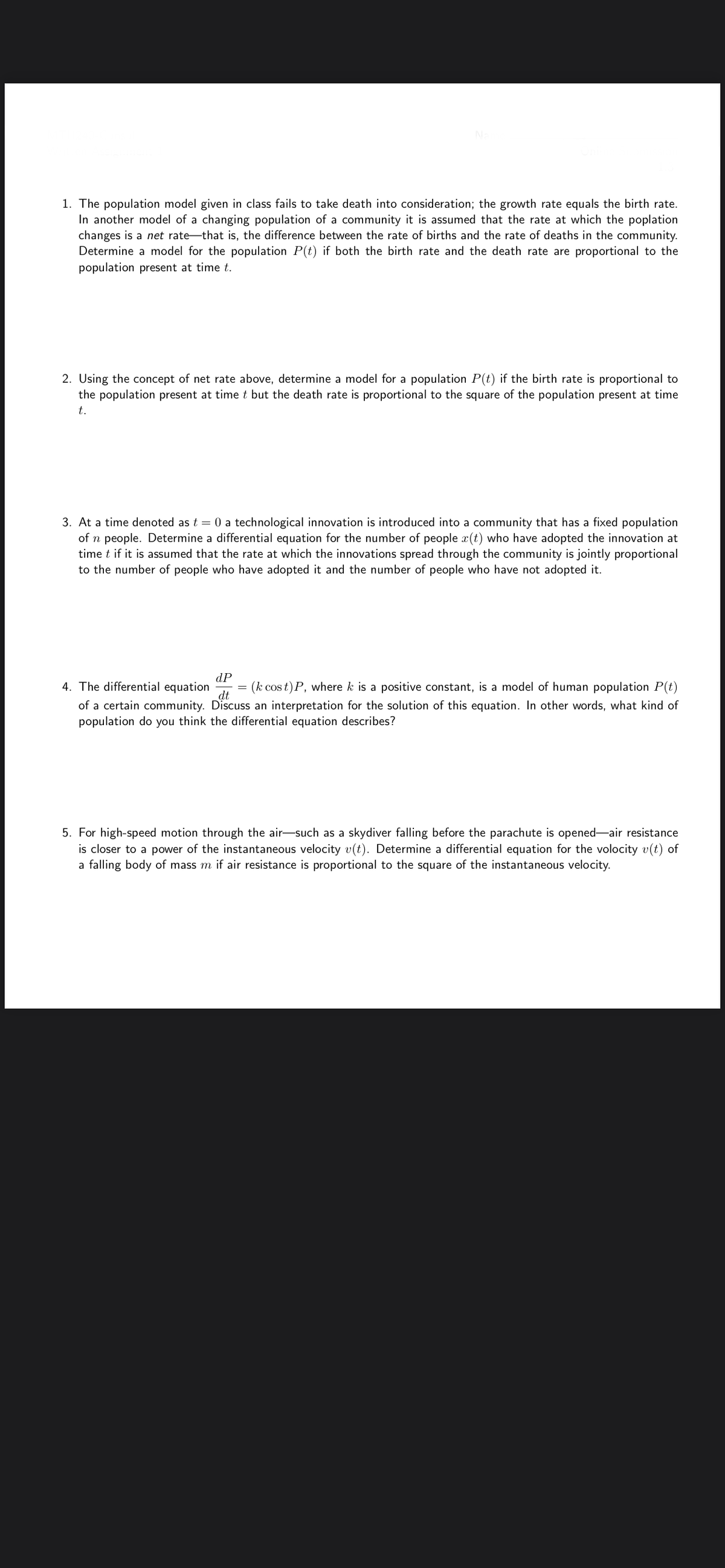Using the concept of net rate above, determine a model for a population P(t) if the birth rate is proportional to the population present at time t but the death rate is proportional to the square of the population present at time
Using the concept of net rate above, determine a model for a population P(t) if the birth rate is proportional to the population present at time t but the death rate is proportional to the square of the population present at time
Linear Algebra: A Modern Introduction
4th Edition
ISBN:9781285463247
Author:David Poole
Publisher:David Poole
Chapter7: Distance And Approximation
Section7.3: Least Squares Approximation
Problem 33EQ
Related questions
Concept explainers
Contingency Table
A contingency table can be defined as the visual representation of the relationship between two or more categorical variables that can be evaluated and registered. It is a categorical version of the scatterplot, which is used to investigate the linear relationship between two variables. A contingency table is indeed a type of frequency distribution table that displays two variables at the same time.
Binomial Distribution
Binomial is an algebraic expression of the sum or the difference of two terms. Before knowing about binomial distribution, we must know about the binomial theorem.
Topic Video
Question
Answer Question 2 pls

Transcribed Image Text:1. The population model given in class fails to take death into consideration; the growth rate equals the birth rate.
In another model of a changing population of a community it is assumed that the rate at which the poplation
changes is a net rate-that is, the difference between the rate of births and the rate of deaths in the community.
Determine a model for the population P(t) if both the birth rate and the death rate are proportional to the
population present at time t.
2. Using the concept of net rate above, determine a model for a population P(t) if the birth rate is proportional to
the population present at time t but the death rate is proportional to the square of the population present at time
t.
3. At a time denoted as t = 0 a technological innovation is introduced into a community that has a fixed population
of n people. Determine a differential equation for the number of people x(t) who have adopted the innovation at
time t if it is assumed that the rate at which the innovations spread through the community is jointly proportional
to the number of people who have adopted it and the number of people who have not adopted it.
dP
= (k cos t) P, where k is a positive constant, is a model of human population P(t)
4. The differential equation
of a certain community. Discuss an interpretation for the solution of this equation. In other words, what kind of
population do you think the differential equation describes?
dt
5. For high-speed motion through the air-such as a skydiver falling before the parachute is opened-air resistance
is closer to a power of the instantaneous velocity v(t). Determine a differential equation for the volocity v(t) of
a falling body of mass m if air resistance is proportional to the square of the instantaneous velocity.
Expert Solution
This question has been solved!
Explore an expertly crafted, step-by-step solution for a thorough understanding of key concepts.
This is a popular solution!
Trending now
This is a popular solution!
Step by step
Solved in 2 steps

Knowledge Booster
Learn more about
Need a deep-dive on the concept behind this application? Look no further. Learn more about this topic, statistics and related others by exploring similar questions and additional content below.Recommended textbooks for you

Linear Algebra: A Modern Introduction
Algebra
ISBN:
9781285463247
Author:
David Poole
Publisher:
Cengage Learning

Algebra & Trigonometry with Analytic Geometry
Algebra
ISBN:
9781133382119
Author:
Swokowski
Publisher:
Cengage

Linear Algebra: A Modern Introduction
Algebra
ISBN:
9781285463247
Author:
David Poole
Publisher:
Cengage Learning

Algebra & Trigonometry with Analytic Geometry
Algebra
ISBN:
9781133382119
Author:
Swokowski
Publisher:
Cengage